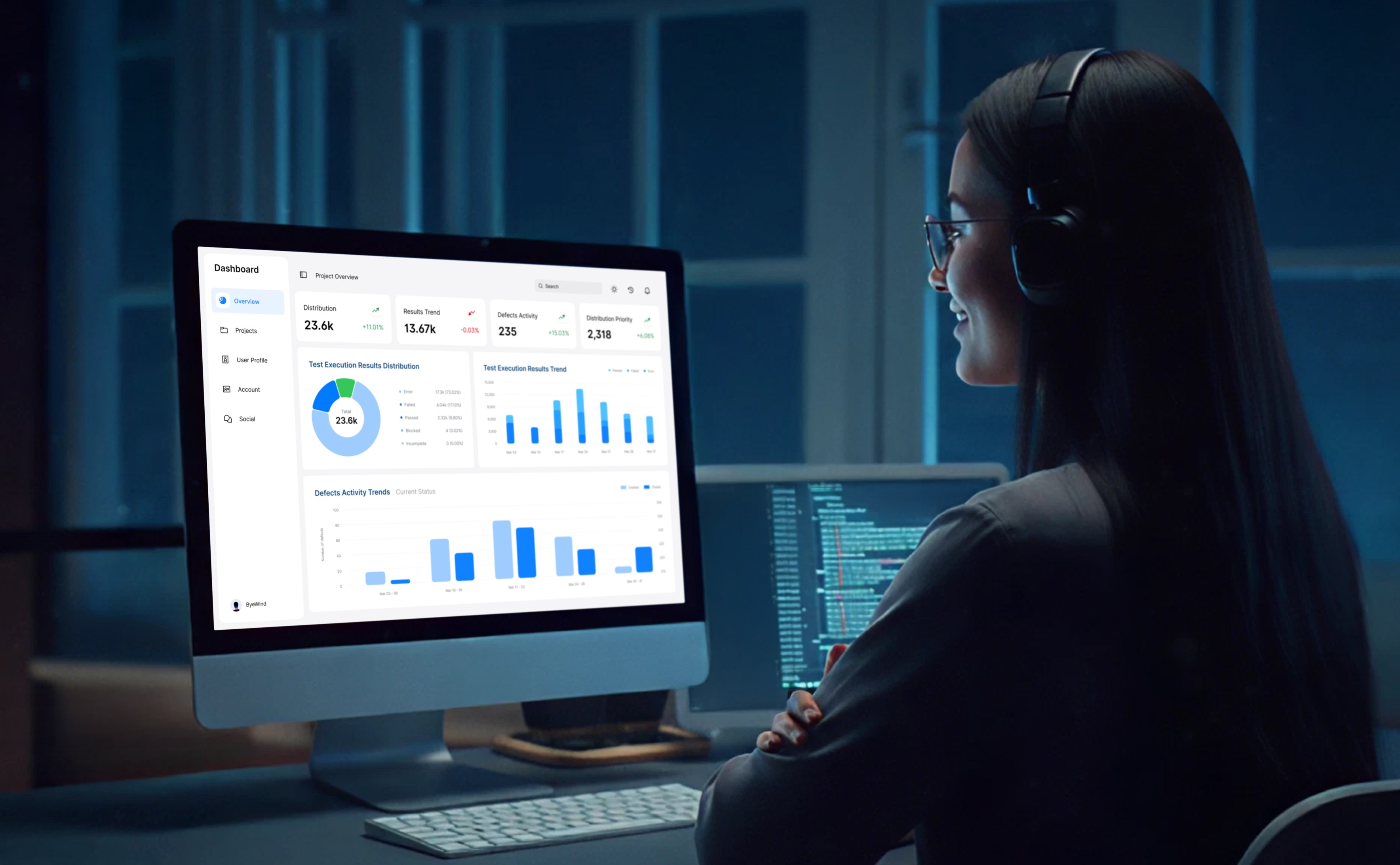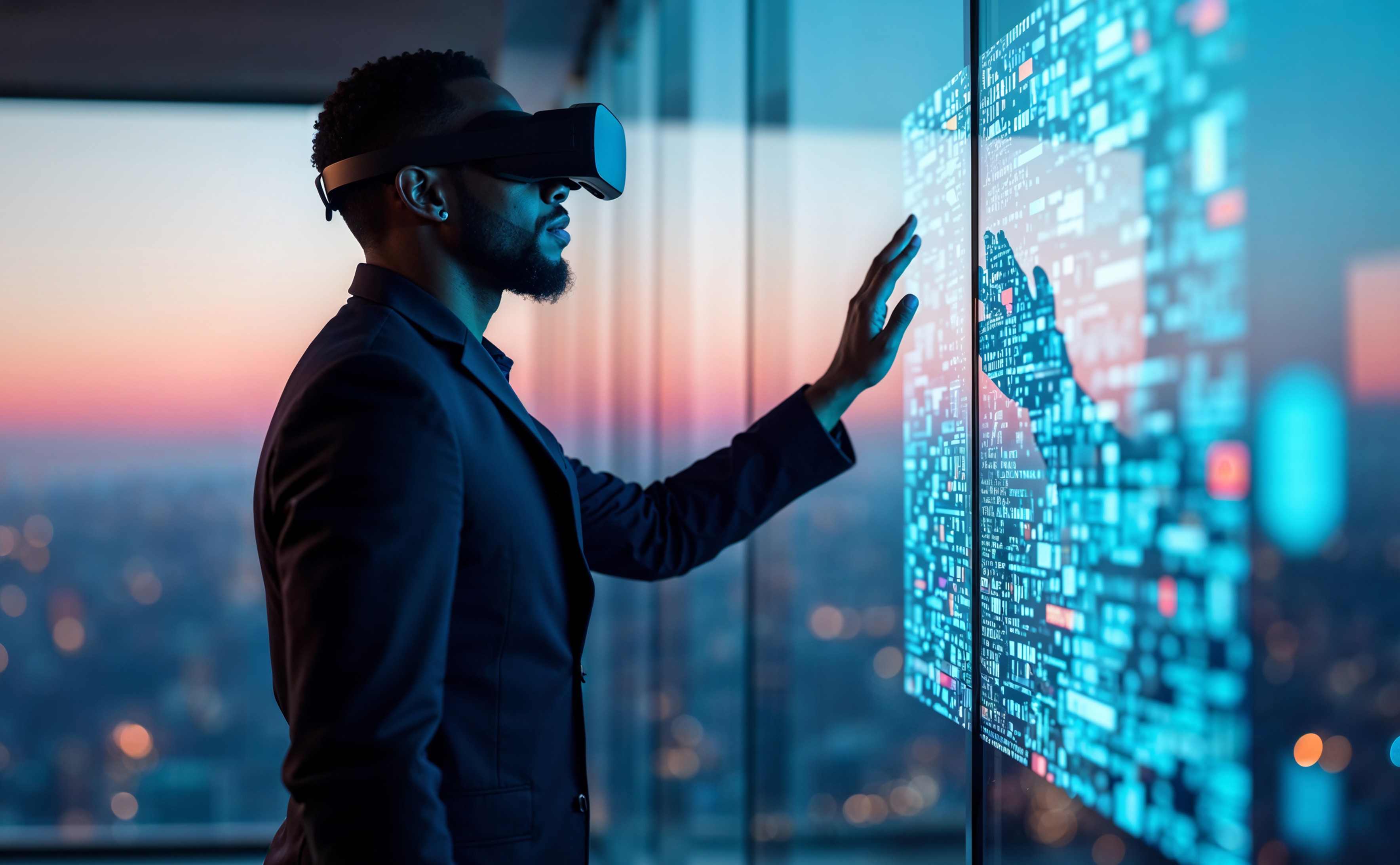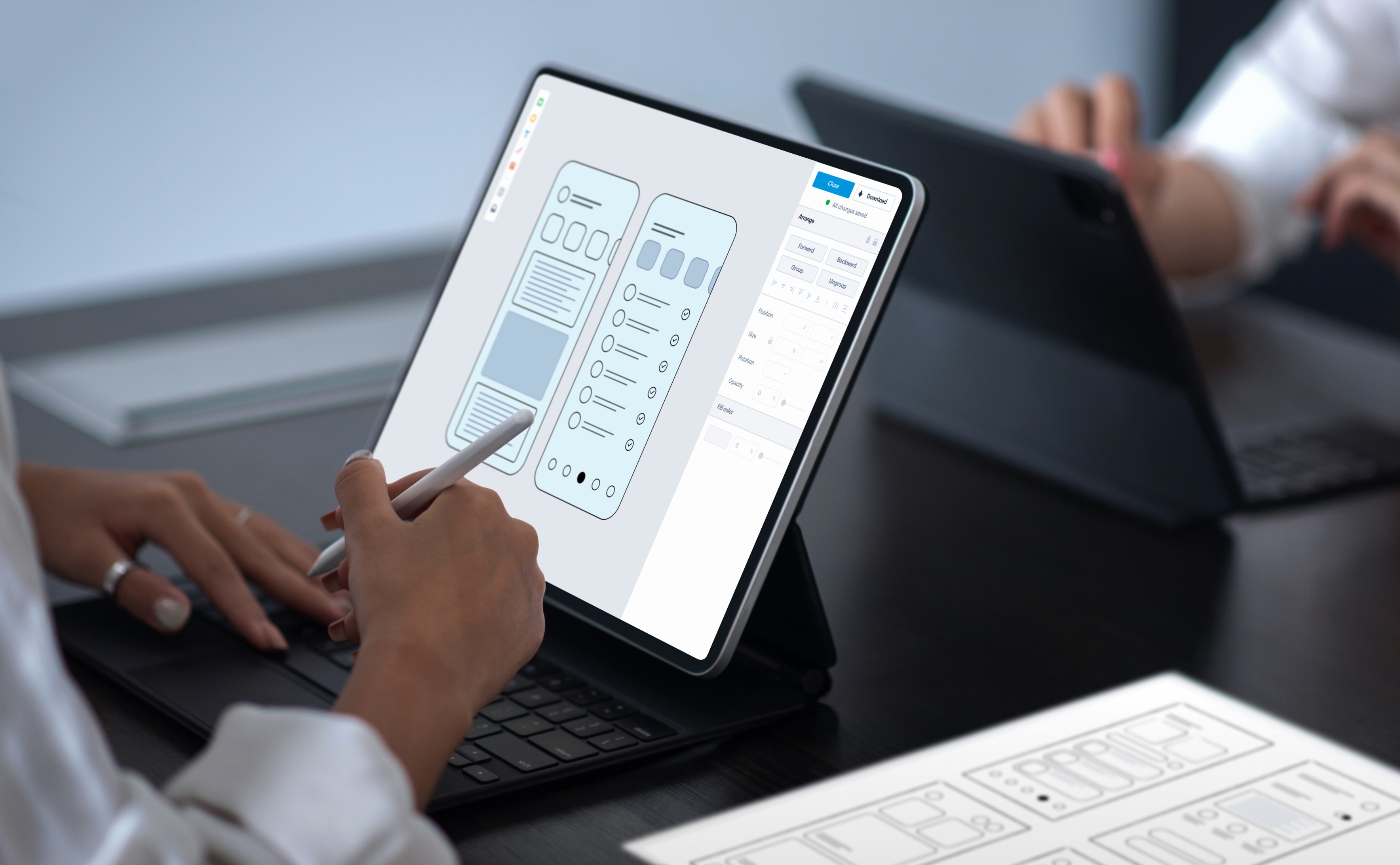Omnichannel Retail: Strategies to Satisfy Today's Shoppers

- What is an Omnichannel Retail Strategy?
- Comparison Between Omnichannel, Multichannel Strategies, and Single Channel Retailing
- Examples of Brands Adopting Omnichannel in Retail
- Core Benefits of an Omnichannel Retail Strategy
- Different Avenues of Omnichannel Retail
- Shopping Behaviour Has Shifted to an Omnichannel Retail Experience
- How to Build an Effective Omnichannel Retail Strategy?
- Omnichannel Retail Strategies to Satisfy Today’s Shoppers
- Final Thoughts
- What is an Omnichannel Retail Strategy?
- Comparison Between Omnichannel, Multichannel Strategies, and Single Channel Retailing
- Examples of Brands Adopting Omnichannel in Retail
- Core Benefits of an Omnichannel Retail Strategy
- Different Avenues of Omnichannel Retail
- Shopping Behaviour Has Shifted to an Omnichannel Retail Experience
- How to Build an Effective Omnichannel Retail Strategy?
- Omnichannel Retail Strategies to Satisfy Today’s Shoppers
- Final Thoughts
Businesses can’t afford to miss out on even a single opportunity to improve customer engagement. Retailers need to adopt an omnichannel retail strategy to offer an optimized experience that makes customers return and helps them achieve the desired customer engagement. Omnichannel strategy maximizes engagement, improves retention, and offers a stunning customer experience.
In omnichannel retail, businesses offer a unified shopping experience across channels like online platforms, physical shopfronts, mobile applications, social media, etc. This approach ensures that customers can engage with a brand with high consistency and personalization in place, irrespective of the channel they wish to engage with, thereby improving customer satisfaction and loyalty. Google’s internal data proves that omnichannel retail strategies drive 80% higher store visits. How exciting does that sound?
Consumers are usually welcomed with novel approaches towards exploring products, so they expect great convenience to streamline their purchase decisions. This blog delves into how you can integrate offline and online channels with an omnichannel retail strategy, helping to create an enriching customer experience across every touchpoint.
What is an Omnichannel Retail Strategy?
Omnichannel retailing is defined as transacting across different channels, including social channels, marketplaces, brick-and-mortar stores, etc. It has become a popular chant, but it is not confined to just a way of describing what you sell across multiple channels. The omnichannel retail strategy enables retailers to engage customers along various physical and digital touchpoints.
As customers traverse along these channels, applications and data also move along with them. It creates a consistent brand experience from beginning to end. This understanding enables large brands to use an omnichannel ‘store as media’ approach, combined with other experiences in a brick-and-mortar store location, to expand their visibility, reach, and impact on their consumers.
Shoppers can also expect omnichannel retail businesses to resolve product delivery concerns, which include curbside pickups, BOPIS (Buy Online Pickup In-Store), lockers, and related touchpoints in their interactions with retailers. Using the integrated omnichannel strategy, retailers can offer a convenient and personalized buying experience throughout the customer journey—whether the buyer shops online through their mobile device or shops in-store.
Comparison Between Omnichannel, Multichannel Strategies, and Single Channel Retailing
| Omnichannel | Multichannel | Single-Channel | |
|---|---|---|---|
| Definition | Seamless integration of sales channels for a unified brand experience. | Selling across multiple, usually unconnected channels. | Selling via a single platform or channel alone. |
| Customer Experience | Consistent experience across every channel. | Varied experience with varied messaging and strategies. | Confined to a single platform and restricts accessibility. |
| Focus | Customer journey and relationship building throughout channels. | Optimizing individual channels or touchpoints. | Maximizing performance of the single channel. |
| Data Integration | Comprehensive data sharing and completely integrated systems across the channels. | Little to no data integration among channels | No integration is needed beyond the single channel. |
| Scalability | High scalability and potential for channel expansion and optimization. | Moderate scalability; however, risk inefficiencies exist across channels. | Least scalability relies on single-channel performance. |
| Meeting Customer Expectations | Works closely with the expectations for convenience among modern customers. | Partially meets customers' expectations but lacks cohesion. | Can’t completely meet customer expectations for convenience. |
Examples of Brands Adopting Omnichannel in Retail
Companies with high omnichannel customer engagement strategies have been able to make an outstanding conversion, i.e., 89% of buyers transformed into the most loyal and returning shoppers, according to a study. Here are some examples of some popular brands that have adopted an omnichannel retail strategy in their operations.
Starbucks
Starbucks users accumulate reward points whenever they pay using a Starbucks card. The linked application also lets the user find stores nearby, send gifts, buy drinks in advance for a faster purchase experience, and view new menu additions. The recent Spotify integration helps consumers view the songs currently playing in-store and add those to the playlists.
Disney
Disney had launched the ‘Magic Band Program’, which is a smartly executed weapon in the omnichannel realm, enabling Disneyland and Disney World visitors to get into the parks, explore the hotel rooms, FastPass lanes, link to the Disney PhotoPass account, and charge the park-made purchases to the Magic Band. All of this gets linked to the My Disney Experience account, which you can access via the mobile app.
Nordstrom
Nordstrom is popular for its omnichannel integration features. It lets customers shop online via mobile application or in-store with a long-lasting experience. Features like online reservation capabilities, curbside pickup, in-store trials, and simple online returns signify their commitment to developing an unparalleled customer experience.
Target
Target has gone omnichannel with distinct features; 'Drive Up’ is an example. Here the customers can make online purchases and get the products delivered in the car while being at the parking lot. This application lets customers locate products in-store and provides exciting deals to enable in-store shopping integrations. They also integrate inventory management effectively throughout physical and online shops.
Sephora
The brand excels at building a dedicated shopping experience across each channel. With an array of features like in-store digital kiosks and the Virtual Artist App, it lets buyers give the products a virtual try-on. These have the Beauty Insider Loyalty program integrated across each channel, thus enabling buyers to earn and redeem points in purchases across the app, in-store or online.
IKEA
IKEA has made an omnichannel strategy that works based on Augmented Reality (AR). This application ensures customers can visualize the furniture in their home before they purchase it. They have also integrated both online and offline experiences, ensuring the product availability is connected to the local inventory for click-and-collect service.
Best Buy
Best Buy has transformed its business model with in-store and online buying experience integration. They offer price matching for online and offline competitors and efficient in-store pickup for online purchases. They have trained experts to offer specialized advice in-store and online to ensure dedicated customer service.
Core Benefits of an Omnichannel Retail Strategy
Omnichannel retailing extends to multiple touchpoints—in-store, online, and mobile—and builds a streamlined shopping experience that expands sales opportunities, eventually making high revenue. With accessibility across these platforms, retailers can contribute to changing customer preferences, reaching a huge audience. These touchpoints influence cross-channel communications, where shoppers might search for products online, go for in-store trials, and finish purchases with the mobile application.
Each channel can also encourage impulse purchases; this could be through personalized recommendations online, visual displays in-store, push notifications, or one-click checkout on mobile. Consistency in engagement can improve retention, push repeat purchases, and build a sustainable revenue stream. Let’s take a closer look at the core benefits of omnichannel retail strategy.
Reach customers wherever they are: By incorporating various interconnected channels into the omnichannel strategy, you can connect to the customers wherever they are.
Eliminate barriers for customers: Omnichannel strategy lets retailers develop orchestrated customer journeys that let customers navigate along conversion funnels by eliminating undesired clicks and connecting with them over the perfect channel at the perfect time.
Enable teams to offer personalized campaigns: It lets retailers deliver customers with hyper-personalized and targeted content and messaging that resonates well with them.
Intuitive customer-centric experience: More than anything, an omnichannel strategy improves engagement significantly by offering customers a seamless, intuitive, integrated, and customer-centric experience.
Improve conversion rates: With optimized omnichannel campaigns that connect with customers with optimal channels, you can attain high open rates and greater impact, thereby leading to a conversion.
Boosts retention: An optimal customer experience motivates them to return to make continuous purchases. With time, it lets retailers improve Average Order Value (AOV), Customer Lifetime Value (CLV), and total revenue.
Nurture brand loyalty: Customers who get a seamless experience as they access the brand always return to have more. The right messaging along the right channel lets brands develop meaningful relationships with customers that lead to both loyalty and brand advocacy.
Encourage word-of-mouth marketing: Customers gather the best experiences and share them with friends and family. With an exceptional customer experience, loyal customers usually recommend your brand to others, helping you gain new visitors.
Gain valuable customer insights: With an omnichannel system that lets you gather and unify customer-specific data, retailers can get a comprehensive view of customers, empowering them to perform in-depth customer analysis.
Different Avenues of Omnichannel Retail
Let’s look at the different channels accessible for the omnichannel firms to take part in to give a seamless customer experience.
Marketplaces
Omnichannel can move ahead with the effective use of online marketplaces. By utilizing the advantage of current markets and successful firms, businesses can win the competition and save on time and expenses.
Amazon
Amazon is yet another example of a successful omnichannel-enabled marketplace. With Amazon, businesses can get access to a great pool of monthly visits, a reliable fulfillment center adaptable to anywhere you sell, Amazon Prime members, and one of the largest data gathering centers globally.
Walmart
Being one of the largest retailers worldwide, incorporating it into the omnichannel retail strategy can help your business widen its reach to a massive audience due to its accessibility to a large number of monthly visitors, fast delivery and returns, and accessibility to seller tools for advertising, reporting, and analytics. Walmart.com sellers earn 13 times more visitors every month compared to Amazon, which makes the platform less saturated by sellers than other marketplaces. Walmart Marketplace sellers get approximately 27,000 visitors when compared to 2,100 on Amazon.
Mercado Libre
Mercado Libre, better known as ‘Amazon of Latin America,’ helps businesses explore the omnichannel opportunity across borders. This is the No. 1 e-commerce marketplace in Latin America; it operates across 18 countries and reaches 65+ million shoppers.
Wish
Being one of the most downloaded global shopping applications with 120+ active countries, Wish offers a free integration with account management support, helping BigCommerce merchants. It encompasses a dedicated account manager to manage onboarding, merchandising, listing, impression growth support, etc.
Social Commerce
The social media platforms like Facebook, Instagram, and TikTok offer an avenue for omnichannel firms. Businesses can expand their reach to unexplored markets with digital advertisements across social media platforms and mobile applications. Facebook has its marketplace system, used primarily by individual users, which has further grown to hold larger businesses.
Search
With a huge number of people opting for Google every day, keeping ads and listingson Google is the right strategy to showcase your business and products to the right buyers at the right time.
Shopping Behaviour Has Shifted to an Omnichannel Retail Experience
The way we purchase has evolved, especially over the past few years, which witnessed an overall surge in online commerce. Consumers opt for a more flexible approach towards retail sales, involving various channels throughout the buying journey.
This change isn’t a result of the pandemic alone. While COVID-19 had triggered the trend, it also emphasized the necessity for retailers to adapt and provide a unified shopping experience. Let it be browsing online or visiting a store, buyers desire a seamless experience across every touchpoint.
This shift goes beyond just opting for different channels. Buying habits have also evolved in other ways. Shoppers are more likely to try more brands and products influenced by the online ecosystem. Additionally, some shopping constraints, like preferring curbside pickup, have taken place.
Andrew Kandel, Head of Sales at Waze, North America, had expressed his thoughts about the trend in this changing customer behavior. He explained that even while things return to normalcy, there will still be an evolved customer who witnesses the world differently.
How to Build an Effective Omnichannel Retail Strategy?
Are you looking to enhance the omnichannel customer experience? Look at the steps below that let you craft a reliable strategy.
1. Classify your customers into segments
Firstly, segment your customers. Figure out your audience and see how you can personalize what you offer instead of a one-size-fits-all approach. Segment them based on geographic region, gender, income, age, values, or even previous interactions.
2. Identify into which channel each segment applies
After having the segments, search for the top-used channels for every segment. This can incorporate chat, phone, email, or social media messages.
For example, say the customers of the age group 20-35 use the chat feature often to connect to your team; they are also the top buyers. Here, you need to consider emphasizing your efforts on customizing the chat experience.
Make sure you track the key performance indicators and omnichannel analytics to drive more insights on how you can use the channel among the target audience.
3. Make a customer journey map
After checking on the buyers and the preferred channels, you need a customer journey map. It defines the ‘how’ and ‘why’ behind the buyer’s decisions and experiences.
The customer journey map tracks things such as:
Touchpoints: the interactions customers make with the company, regardless of happening via chat, social media, etc.
Pain points & opportunities: Gaps in the customer experience can occur while mapping the buyer's journey and surface concerns that were not noticed before.
Actions and emotions: This information defines how a buyer feels during the customer journey. These emotions can result in a purchase or churn. For instance, when a user is interested in buying a product but has concerns with the checkout process, they might search for alternatives.
4. Offer cross-channel customer support
Since your omnichannel buying experience also boasts a multichannel experience, you would also need to build cross-channel support to manage requests across each platform. An omnichannel customer service team works on delivering more personalized customer experiences, identifying opportunities to satisfy customers, improving revenue, reducing churn, and resolving concerns quickly.
5. Add Integration
Focus on incorporating various integrations as a part of the retail omnichannel strategy. For instance, you might need an app that lets you track inventory, one that supports direct social media messages, and one that tracks support tickets. Such integrations can help you offer a unified real-time view of operations and data.
6. Implement automation
Automation lets you streamline operations and offer the best support experience. This is where the use of Artificial Intelligence arises—AI helps your team leverage chatbots for deflecting simple questions, offer more personalized experiences with product recommendations, and automate follow-up messages to improve customer retention.
7. Test regularly
It is essential to test and experiment using various actions to see which suits your business the best. For instance, test content, email subject line, formatting, templates, etc. Make testing a habit to make sure the strategy adapts to the changing retail environment.
Omnichannel Retail Strategies to Satisfy Today’s Shoppers
Every retailer should strategize different ways to bring together their brand, business goals, and customer requirements. Here are a few trends retailers tailor to their business:
AR (Augmented Reality)
Customers would refuse to order particular products online. For instance, a couch might be accessible at a huge deal, but not knowing how it suits a specific environment might restrict someone from adding the product to the cart. AR has given an interactive version of the ‘try before you buy’ approach, with the ability to visualize products in the real world. For instance, IKEA enables customers to have virtual placement of furniture in their homes using the IKEA Place app.
In-store Mobile Connectivity
In-store mobile connectivity improved omnichannel retailing with a combination of physical and digital experiences, providing personalized support through applications with features such as product locations and real-time offers. It simplifies shopping with mobile checkout and omnichannel fulfillment features like curbside pickup, BOPIS, etc. Also, it uses AR tools for product discovery and integrates loyalty programs to ensure seamless rewards along channels. An example of in-store mobile connectivity is Target, with Cartwheel and wallet features, where customers can apply discounts directly during checkout on their mobile phones.
Personalization
Only generic strategies can help businesses lead to generic buyer experiences. A survey by Hubspot states that 78% of customers expect a higher level of personalized interactions than they used to have. Delivering personalized content and product recommendations shows how present-day retailers can grab the attention of buyers. Nike’s ‘Nike By You’ is an example in which online buyers can express themselves by making customized product designs. Personalization should apply to each aspect of omnichannel retail strategy, running from the product recommendations to the advertisement types customers are targeted with. CRM lets retailers gather and analyze consumer-specific data and utilize it to develop in-depth customer profiles as per geographic location, demographics, shopping habits, life milestones, personal preferences, etc.
Store Communication Platforms
An ideal example would be Lush Cosmetics. This popular organic beauty retailer had its partnership with Retail Zipline to make a store communication and workflow platform that improved communication between store associates, managers, and company professionals. Employees can just download the app to their mobile devices and log in while their shift begins. Employees can check the app throughout the day for messaging and updates about everything ranging from product launches to marketing campaigns. This is how store communication platforms have grabbed the attention of businesses.
Contactless Shopping
Both contactless shopping and autonomous payment have taken a surge in recent times, with an increase in shoppers using their mobile devices for payments. Walmart is the best example, which facilitates contactless shopping with QR code scanning to the Walmart Pay app, enabling online orders with hassle-free contactless pickup and signature-free delivery.
Social Integration
Consumers prioritize the visual impact. Social media has evolved to be an effective way to interact with customers, as it lets brands permeate the feeds using visually appealing images. Instagram has been a well-known advertising platform for retailers; however, social networking has transformed with the Instagram Shopping feature. With the Instagram shopping functionality, consumers can scroll and shop for all their favorite brands without needing to exit the application. It also offers a mobile checkout system, helping customers to make impulsive purchases.
Artificial Intelligence and Machine Learning
AI and ML consistently drive omnichannel retailing trends for the real reason: there are many applications for AI and ML in omnichannel retailing, from understanding model behavior to optimizing order fulfillment to accomplishing customer segmentation. Some brands, for example, Domino’s Australia, implemented DOM Pizza Checker, using advanced ML, AI, and sensor technology to evaluate and verify the topping distribution to improve pizza quality and consistency.
Final Thoughts
An omnichannel retail strategy pours to the cups of maximizing customer engagement with modern buyers. It lets physical and digital retailers engage with customers with the right messaging at the right time using preferred channels. This customer-centric approach enhances the customer experience, ensuring the customers always return for more.
Customers demand seamless omnichannel purchase experiences. Today’s retailers need to adapt themselves to the changing customer requirements and behaviors and recalibrate the understanding of the consumer. With an omnichannel retail strategy, you can improve the customer experience and offer more channels to evoke customer purchase—via mobile, web, or in-store.
As a leading ecommerce development company, we have strong expertise in major ecommerce platforms like Shopify, Adobe Commerce, and WooCommerce. We help brands develop omnichannel retail strategies and support their initiatives in creating omnichannel retail storefront experiences. With dedicated ecommerce development experts, we let you increase conversions and foster long-lasting brand loyalty that leads to increased revenue.
Looking for a seamless omnichannel eCommerce solution?
Let's talkLoading...
- E-Commerce Statistics 2025: Key Trends, Growth Insights & Global Shopping Behavior
- Top Gen Z Shopping Trends Shaping eCommerce in 2025
- Adobe Commerce vs Commercetools: Choosing the Right eCommerce Platform for Scalable Success
- Composable Commerce in 2025: A Mainstream Solution for the Future of Retail
- E-commerce Trends That Are Powering Online Retail Forward In 2025
Discover Digital Transformation
Please feel free to share your thoughts and we can discuss it over a cup of tea.










